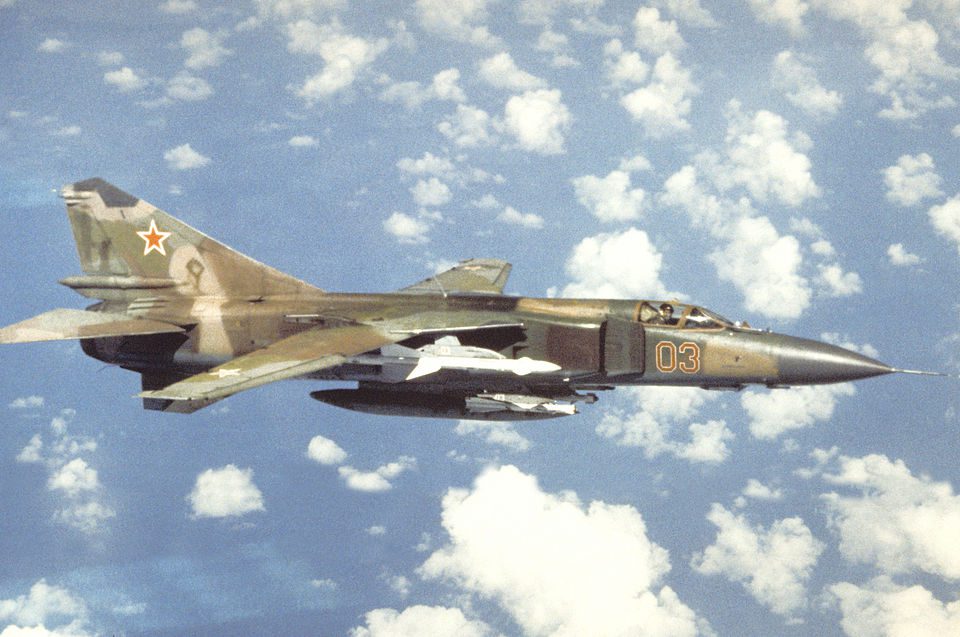
The Mikoyan-Gurevich MiG-23 aka The “Flogger”. The Flogger was an important fighter jet developed during the Cold War. Seeing how efficient the MiG-21 was, the command requested an improved version of it. Soviet engineers must have been proud of their work. Compliment is sweet. The MiG-23 Flogger, which emerged as a result of this request, brought a new breath to the Soviet Air Force and its allies. Let’s examine this aircraft, which has an important place in aviation history from the day it was designed to its current adventure.
Innovative Design: The Variable-Sweep Advantage
What really set the MiG-23 apart was its innovative variable geometry wing, commonly referred to as a “swing wing”. Like all designs, this design was not just for aesthetic purposes. It was also intended to provide combat advantages. Pilots could adjust the wing pitch during flight, as well as make adjustments for improved lift during takeoff and landing, allowing for takeoff and landing on short runways. In the air, it could be swept back sharply to reach supersonic speeds exceeding Mach 2. This adaptability made the MiG-23 a versatile platform that could optimize its aerodynamics for different phases of flight and combat scenarios.
Armament and Capabilities: More Than Just Speed
The MiG-23’s impressive speed wasn’t its only asset. It was much more than that. The MiG-23 Flogger was a well-armed interceptor. Its cannons, as well as its air-to-air missiles, made it a formidable force. It underwent many upgrades during its life. There was a big difference between its final and initial versions. Some variants were also adapted for ground attack roles. The flexibility of the fuselage allowed this. By the end of the story, the total production number had reached over 5,000. This was a significant number even for the powerful Soviet industry.
The MiG-23 Flogger in Combat: A Global Footprint
The MiG-23 was not merely an impressive piece of engineering; it was a battle-hardened aircraft that saw extensive service in numerous conflicts around the world:
- Soviet-Afghan War: We all know how long and tiring the conflicts in Afghanistan were. MiG-23s undertook many difficult missions in these conflicts. They even clashed with F-16s.
- Iran-Iraq War: The Iraqi Air Force used its MiG-232s in many places during the eight-year war with Iran. They formed Iraq’s striking force. They participated in air combat.
- Middle Eastern Conflicts: Syrian MiG-23s fought their Israeli enemies in many places. They performed notably during the Libyan civil war.
- African Wars: Angolan and Cuban MiG-23s flew over African skies during the Angolan civil war. They also served in the Ethiopian Air Force in many regional conflicts.
From many examples, we can see that the MiG-23’s reputation was not in vain. It made a name for itself because it proved its strength.
Still Flying: Current Operators of the MiG-23 Flogger
With the end of the Cold War and the emergence of newer aircraft, the MiG-23’s Russian adventure came to an end. It was retired not only in Russia but also in many advanced air forces. However, it still continues to fly in the skies. Low-tech countries such as Angola, Cuba, the Democratic Republic of the Congo, Ethiopia, North Korea and Syria continue to fly this beast. It is a durable aircraft. We do not know how many more years it will fly. However, if there is one thing we do know, it is that this beast still bites where it roars.
We will continue our series of articles introducing the Soviet school and Russian jets with the Su-15. Stay tuned.





